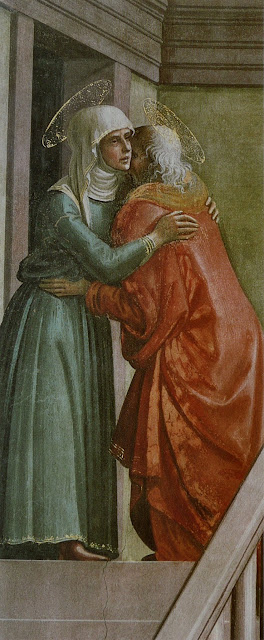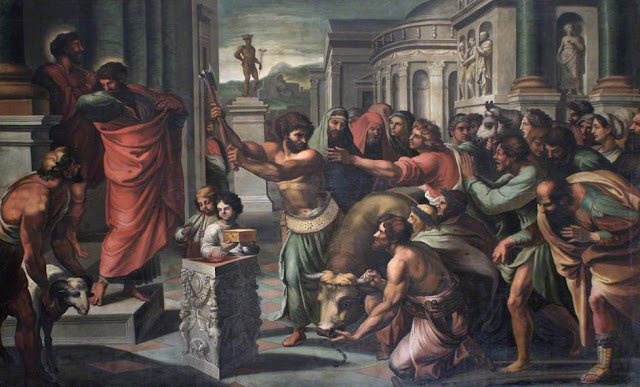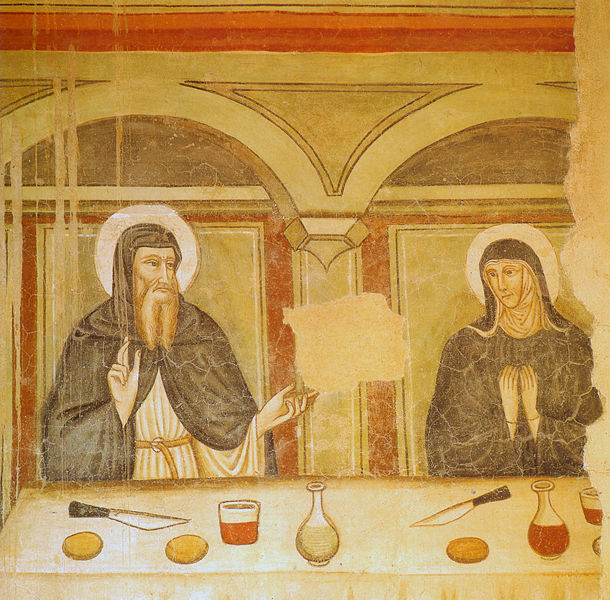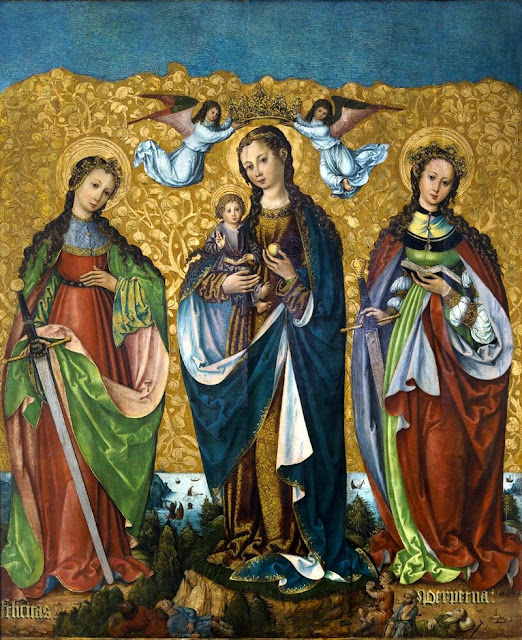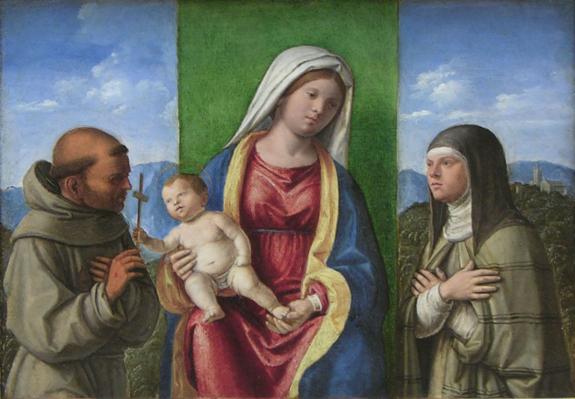The following traditional prayers, plus other important principles, are also available (below) in a convenient 3-fold format where everything fits on both sides of a single sheet of paper.
I have done this to create a simple means of study, and hope that you find it useful.
Please find the downloads links further below to get either PDF (Acrobat) or MDI format print-ready files.
All 28 Most Important Catholic Prayers & Principles in a single webpage
(plus, separately:)
The Ten Commandments
The Seven Sacraments
The Our Father
The Hail Mary
The Glory Be
The Sign of the Cross
Act of Contrition
Grace (before meals)
Entering a Church
Commandments (Modernised)
Virtues (Theological & Cardinal)
Sins Against The Holy Spirit
Spiritual Works of Mercy
Corporal Works of Mercy
7 Gifts of The Holy Spirit
12 Fruits of The Holy Spirit
Stations of The Cross
Confiteor
Apostles Creed
Nicene Creed
Stations of the Cross
Saint & Prayer Notebook
Wednesday, September 30, 2020
Catholic Prayers & Principles
Sunday, June 10, 2018
St. Margaret of Scotland 1045-1093 (June 10)
Called the Pearl of Scotland, today's saint is one of the patronesses of mothers with many children! Read on, Moms...
Saint Margaret of Scotland lived from 1045 to 16 November 1093. She was probably born in what is now Hungary, and her grandfather on her mother's side was thought to have been Yaroslav I the Wise, Prince of Novgorod and Kiev. The wider picture in Scotland at the time is set out in our Historical Timeline.
Margaret's great-uncle was King Edward the Confessor of England. When King Harold was killed by the Normans at the Battle of Hastings in 1066, Margaret's brother Edgar Atheling was regarded by the English as rightful heir to the throne. This was not accepted by William of Normandy, and together with their mother, Edgar and Margaret sailed from Northumberland to exile on the continent. A storm took them instead to Scotland, where they were given refuge by Malcolm III, who probably already knew them well from his own years of refuge in England, when Macbeth was on the Scottish throne.
Malcolm III was a widower with three children from his first marriage when he and Margaret married in 1070. Margaret's impact was dramatic. She favoured the Roman Catholic church to the Celtic Church and brought Benedictine monks to establish an abbey at Dunfermline. To allow her to feel more at home, Malcolm decreed that the language used at court should be Saxon rather than Gaelic. As a result Malcolm III was the first to be called "King of Scotland" in his own time.
Margaret also had built what is today called St Margaret's Chapel, in the highest part of Edinburgh Castle; she arranged for the rebuilding of the monastery of Iona; and she provided a free ferry across the Forth (at Queensferry) for pilgrims en route to the major religious centres at Dunfermline and St Andrews. More widely she caused a resurgence of religious life across Scotland.
Malcolm and Margaret had eight children: Edward; Edmund; Ethelred; Edgar; Alexander; David; Edith or Matilda; and Mary. The extent of Margaret's influence on the future direction of the Scottish crown and of Scotland more widely can be seen by comparing the Gaelic names of the three children from Malcolm's first marriage and the absence of Gaelic names among the eight from his second.
Malcolm III was keen to take advantage of the disruption caused by the Norman conquest of England to further Scotland's interests. More charitably, he was also interested in rolling back the Norman invasion of England to place the "rightful" Saxon heir, his brother in law Edgar the Atheling, on the English throne. He therefore embarked on a series of invasions of England, all unsuccessful.
The last invasion took place in 1093, by which time William II had succeeded William I on the English throne. Malcolm III was killed in battle against the English at Alnwick, Northumberland, on 13 November 1093, aged 62. His eldest son by Margaret, Prince Edward of Scotland, died alongside him. Margaret was told of the deaths by her second son, Edmund. She died on 16 November 1093.
St Margaret was canonised in 1251 by Pope Innocent IV.
Wednesday, January 3, 2018
The Angelus and The Regina Coeli
Angelus (or Regina Coeli): This is the very ancient Catholic custom that has us stop what we are doing to greet our Blessed Mother for a moment (6:00 a.m., noon, 6:00 p.m. daily), as any good child remembers his mother during the day, and to meditate on the Incarnation and Resurrection of our Lord, which give such meaning to our entire existence. The Regina Coeli is said during the Easter season. The Angelus is said during the rest of the year.
THE ANGELUS
V. The Angel of the Lord declared unto Mary,
R. And she conceived of the Holy Spirit.
Hail Mary …
V. Behold the handmaid of the Lord,
Hail Mary …
V. And the Word was made Flesh,
R. And dwelt among us.
Hail Mary …
V. Pray for us, O Holy Mother of God,
R. That we may be made worthy of the promises of Christ.
V. Let us pray. Pour forth, we beseech Thee, O Lord, Thy grace into our hearts; that, we to whom the incarnation of Christ, Thy Son, was made known by the message of an angel, may by His passion and cross, be brought to the glory of His resurrection. Through the same Christ our Lord.
All. Amen.
THE REGINA COELI
Queen of Heaven rejoice, alleluia:
For He Whom you did merit to bear, alleluia,
Has risen as He said, alleluia.
Pray for us to God, alleluia.
Rejoice and be glad, O Virgin Mary, alleluia.
For the Lord has truly risen, alleluia.
Let us pray. O God, Who gave joy to the world through the resurrection of Thy Son, our Lord Jesus Christ, grant we beseech Thee, that through the intercession of the Virgin Mary, His mother, we may obtain the joys of everlasting life. Through the same Christ our Lord. Amen.
Thursday, November 2, 2017
Dynamic Saint Duos
A great find from Catholic All Year!
Spouses, siblings, parents and children, mentors and protegees, friends . . . it turns out that there are quite a few pairs of saints who knew and loved each other.
3. St. Timothy and St. Maura
Newlyweds, martyred together during the persecution of Christians under the Roman Emperor Diocletian also around 300. It's all very romantic.
4. St. Adrian and St. Natalia
Also married. Also martyred. But these guys were in Nicodemia during the time of Emperor Maximian in the early fourth century.
5. St. Ignatius of Loyola and St. Francis Xavier
Two of the founding members of the Jesuit order, these guys were actually ROOMATES IN COLLEGE before they became priests and missionaries and were responsible for ten of thousands of conversions.
6. St. Joseph and the Blessed Virgin
The Mother of God and her spouse, the parents of Jesus on earth, and a perfect example to all of the love of a family.
7. St. Louis Martin and St. Zelie Martin
Speaking of good examples . . . Louis and Zelie Martin had nine children, five of whom lived past infancy. All five of those daughters because nuns. One is St. Therese of Lisieux, Doctor of the Church.
8. St. James and St. John
These guys were actual brothers (as were Sts. Peter and Andrew) who were both among the twelve apostles, and were two of Jesus' closest friends. He called them the "Sons of Thunder," so you KNOW they were fun at parties.
9. St. Monica and St. Augustine
He was a real stinker, but his mother never gave up on him. Eventually, through the tears and prayers of St. Monica, St. Augustine was converted to Christianity and rehabilitated from his wanton ways, to the benefit of all posterity.
10. St. Paul and St. BarnabasNeither met Jesus before his death on the cross, but both worked tirelessly alongside the apostles to spread Christianity in its early days. They had some rather public disagreements about how, exactly, to do this, and with whom. But that's okay. Friends are allowed to decide not to travel together anymore.
11. St. Margaret Mary Alacoque and Bl. Claude ColombiereReceiving a vision from Jesus asking you to spread a devotion to His Sacred Heart has got to be overwhelming, but then to have everyone around you think you're bonkers and/or a liar? That would be even worse. Fortunately for Margaret Mary, she had her confessor, Bl. Claude, who believed in her.
12. St. Benedict and St. ScholasticaThe "Holy Twins," they knew from a very young age that they both wanted to enter religious life. They each founded an order, and used to meet in the middle once a year to talk about old times.
13. St. Teresa of Avila and St. John of the CrossBoth Carmelites in Spain in the 16th century, they worked together to return their religious communities to a life of prayer. But not everyone was on board with their plan. It's nice to know you've got a friend who'll get imprisoned for you.
14. St. Felicity and St. Perpetua
Perpetua was a noblewoman and Felicity was a slave, but the two young mothers were martyred together in the year 203, rather than apostatize. St. Perpetua's letters detailing their imprisonment are a rare first hand account.
15. St. Francis and St. Clare
Clare was a devoted follower of Francis, and was entrusted by him with the founding of a religious order for women. She trusted him to cut her hair.
16. St. Patrick and St. Brigid
Their friendship is noted in the Book of Armagh: "Between St Patrick and Brigid, the pillars of the Irish people, there was so great a friendship of charity that they had but one heart and one mind. Through him and through her Christ performed many great works."
So, there you go, all saints, all loved, but different times and places and types.
Spouses, siblings, parents and children, mentors and protegees, friends . . . it turns out that there are quite a few pairs of saints who knew and loved each other.
1. St. Anne and St. Joachim
Parents of the Blessed Virgin Mary, grandparents of Jesus. These guys had their act together.
2. St. Cosmas and St. Damian
Twin brothers who lived in Syria around the year 300. Both physicians. Apparently their thing was converting people to Christianity by not charging for medical services. Which is an excellent plan right up until you get martryed. (Although, long term, still good.)3. St. Timothy and St. Maura
Newlyweds, martyred together during the persecution of Christians under the Roman Emperor Diocletian also around 300. It's all very romantic.
4. St. Adrian and St. Natalia
Also married. Also martyred. But these guys were in Nicodemia during the time of Emperor Maximian in the early fourth century.
5. St. Ignatius of Loyola and St. Francis Xavier
Two of the founding members of the Jesuit order, these guys were actually ROOMATES IN COLLEGE before they became priests and missionaries and were responsible for ten of thousands of conversions.
6. St. Joseph and the Blessed Virgin
The Mother of God and her spouse, the parents of Jesus on earth, and a perfect example to all of the love of a family.
7. St. Louis Martin and St. Zelie Martin
Speaking of good examples . . . Louis and Zelie Martin had nine children, five of whom lived past infancy. All five of those daughters because nuns. One is St. Therese of Lisieux, Doctor of the Church.
8. St. James and St. John
These guys were actual brothers (as were Sts. Peter and Andrew) who were both among the twelve apostles, and were two of Jesus' closest friends. He called them the "Sons of Thunder," so you KNOW they were fun at parties.
9. St. Monica and St. Augustine
He was a real stinker, but his mother never gave up on him. Eventually, through the tears and prayers of St. Monica, St. Augustine was converted to Christianity and rehabilitated from his wanton ways, to the benefit of all posterity.
10. St. Paul and St. BarnabasNeither met Jesus before his death on the cross, but both worked tirelessly alongside the apostles to spread Christianity in its early days. They had some rather public disagreements about how, exactly, to do this, and with whom. But that's okay. Friends are allowed to decide not to travel together anymore.
11. St. Margaret Mary Alacoque and Bl. Claude ColombiereReceiving a vision from Jesus asking you to spread a devotion to His Sacred Heart has got to be overwhelming, but then to have everyone around you think you're bonkers and/or a liar? That would be even worse. Fortunately for Margaret Mary, she had her confessor, Bl. Claude, who believed in her.
12. St. Benedict and St. ScholasticaThe "Holy Twins," they knew from a very young age that they both wanted to enter religious life. They each founded an order, and used to meet in the middle once a year to talk about old times.
13. St. Teresa of Avila and St. John of the CrossBoth Carmelites in Spain in the 16th century, they worked together to return their religious communities to a life of prayer. But not everyone was on board with their plan. It's nice to know you've got a friend who'll get imprisoned for you.
14. St. Felicity and St. Perpetua
Perpetua was a noblewoman and Felicity was a slave, but the two young mothers were martyred together in the year 203, rather than apostatize. St. Perpetua's letters detailing their imprisonment are a rare first hand account.
15. St. Francis and St. Clare
Clare was a devoted follower of Francis, and was entrusted by him with the founding of a religious order for women. She trusted him to cut her hair.
16. St. Patrick and St. Brigid
Their friendship is noted in the Book of Armagh: "Between St Patrick and Brigid, the pillars of the Irish people, there was so great a friendship of charity that they had but one heart and one mind. Through him and through her Christ performed many great works."
So, there you go, all saints, all loved, but different times and places and types.
Tuesday, October 31, 2017
Six Saints Who Received the Sacred Stigmata
SIX WELL-KNOWN SAINTS THAT RECEIVED THE SACRED STIGMATA  ✝️🙏
✝️🙏
The main purpose of the stigmata is so the saint may suffer in union with Jesus for the conversion of sinners, that is, for the redemption of humanity. Those who bear the stigmata are then “co-redeemers” with Christ, as they, with their limited human capabilities, share in His sufferings and participate in a special way in His Redemption.
Simply put, victim souls make reparation for sin and do penance for all those who don't. And through their sufferings in union with Jesus they lead souls to God, by obtaining the graces that certain souls need to turn to God. They participate in and live the Passion of Jesus in their body and souls, for the conversion of sinners.✨
Friday, October 27, 2017
Sts. Simon and Jude - Feast Day October 27
The celebration of Sts. Simon and Jude recalls for us our own call to be an apostolic people. We’ve heard that term used, especially in the Dogmatic Constitution on the Church (Lumen Gentium). Through Christ’s call in scripture, and through our own understanding of what we, as a people of God, believe our call to be, we recognize a special responsibility to participate in the same mission for which the twelve Apostles were selected.
While it is argued that we are all given different gifts and aptitudes by God, and therefore we are not all cut out to go into the world verbalizing God’s call to holiness to each person we meet, we are all called to do our part in this great work. We believe this is not optional. We cannot simply say:
“I believe in God and that Jesus came as God’s Only Son. Therefore, because I accept him as my personal Savior (he did not come for just one person), I am saved.”
No, our faith, breathed in through Sacred Scripture, breathed in through the sacraments, breathed in through prayer, must be breathed out in actions, a living witness that testifies to our faith.
The Apostles were taken aside by Jesus and given a special authority, special gifts that would allow them to take Jesus’ message into the world, so that all might hear the message and live. He did not restrict this truth to his followers, somehow implying this was a secret or special insight given to them alone! Rather he gave his followers the mission of taking that message to all the corners of the earth.
To Jesus, the world was a giant canvas upon which he painted, using the brushes of the Apostles in bold strokes. But much of what they (the Apostles) could do was also passed on. The blank pieces of canvas were to be filled in by those they touched, and then further by those touched by students of the students of the Twelve, continuing until at last the brush is handed to us, so that every speck can be coated with the love of Christ.
We celebrate today the great work of Saints Simon and Jude, Apostles. In their lives and missions we see the hand of God reach out to the world, inviting all to come and live. We see also, in their call, our own invitation to participate in this great apostolic work of the Church in the world. We pray today for all who work to spread God’s message. We pray also for ourselves, that we might accept the call to witness the love of Christ in all we do.
TY to Deacon Jim Miles for sharing this reflection!
Labels:
Deacon Jim Miles,
Feast Day October,
St Jude,
St Simon
Thursday, October 12, 2017
St. Dominic - Feast Day August 8
 St. Dominic (1170 AD – 1221 AD)
St. Dominic (1170 AD – 1221 AD) The truth is we do not know much about this Saint. Of all his writings, little to nothing has survived to this day. However, his legacy has come down to us in a form of a vibrant and lively Order named after him. His orthodoxy in a time of rampant heresy throughout Europe is inspiring. He travels through Europe establishing different priories and houses for the Order of Preachers to defeat the Cathari heresy, which has its root from the different Gnostic philosophies that appear in the 1stcentury A.D.
The Catharis round up multitudes of converts by utilizing on the wickedness of some clergy in the Church and using the sinful behaviour of Catholic clerics as a catalyst to spur the adherents of the Catholic faith into abandoning the Church and joining their heresy. Closely tied to Manichaeism, the Catharis teach that the universe consists of a duality, which is made of matter and spirit. Everything physical is wicked and must be treated as sinful, whereas only the spirit is good, and it must be protected from the flesh.
Contrary to this view, the Catholic Church teaches that God created all things. Therefore, all things are good, including our bodies and all physical matter around us as well. However, due to Original Sin, our bodies have become corrupt. This corruption is not so extensive that our bodies cannot be salvaged. Rather, through God’s grace offered to us by the Sacraments, we are able to salvage our bodies and temper their rebellious passions, mending their unruly cravings, thereby redeeming our bodies and spirits as well.
In fact, all matter in this universe is redeemed too. In Christianity, evil is not really a substance per se. Instead, evil is a corruption of good. The Dominican theology has been taught for 2000 years by the Catholic Church.
St. Dominic’s inspiring sermons have won back many wayward Christians who have abandoned the Church. His order has produced numerous Saints, among which the most famous being St. Thomas Aquinas, St. Catherine of Sienna, St. Louis de Montfort, and St. Rose of Lima.
May the zeal of this fervent preacher inspire us to love the sinners and desire their salvation.
Pope Gregory IX canonized St. Dominic on July 13, 1234, and his feast day is August 8.
source: http://www.catholic.org/saints/saint.php?saint_id=178
and
http://viewcatholic.blogspot.ca/2012/12/twenty-one-saints-everyone-must-know-ix.html
Subscribe to:
Posts (Atom)




